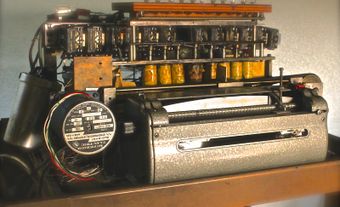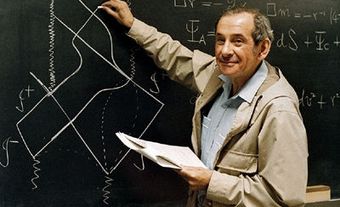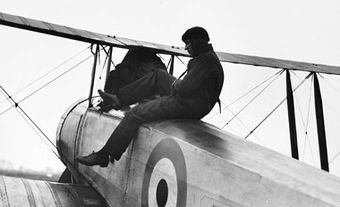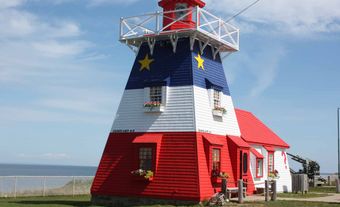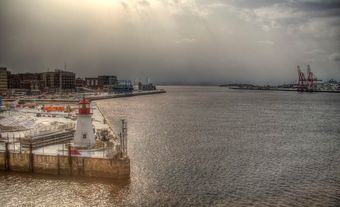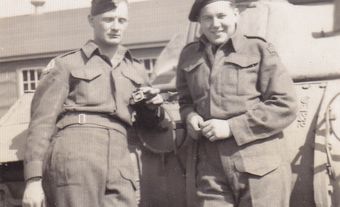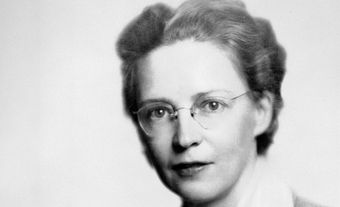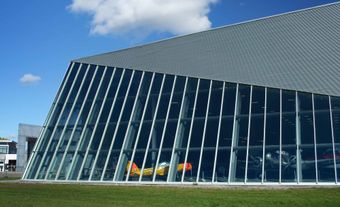Wallace Rupert Turnbull (Rupert), aeronautical engineer (born 16 October 1870 in Saint John, NB; died 26 November 1954 in Saint John, NB). Turnbull is credited with building Canada’s first wind tunnel in Rothesay, NB. He is also recognized for designing the first successful variable-pitch propeller, which he patented in 1922. (See also Aviation.)

Education and Early Career
From a wealthy family, Rupert Turnbull studied mechanical engineering at Cornell University (1893) and physics at the University of Heidelberg and the University of Berlin in Germany. He worked as an engineer at the Edison Lamp Works of General Electric in Harrison, New Jersey, for six years. It is reported that during this period, he began exchanging letters with Gustave Eiffel, who built a wind tunnel and Samuel P. Langley, a pioneer in the field of aviation (see Aerodynamics).
Canada’s First Wind Tunnel
In 1901, Rupert Turnbull returned to New Brunswick and in 1902, he built the first wind tunnel in Canada at his private laboratory in Rothesay. While Turnbull’s laboratory was geographically remote, he was able to collaborate with aviation pioneers such as Alexander Graham Bell and John Hamilton Parkin. In his laboratory, Turnbull conducted tests on airfoils (surfaces like aircraft wings that produce lift and thrust) and airscrews (propellers). Turnbull's research was recognized early, and in 1909 he won a bronze medal from the Royal Aeronautical Society of Great Britain and a fellowship. (See also Aviation.)
First World War
In 1914, during the First World War, Rupert Turnbull temporarily closed his laboratory in Rothesay and went to Britain. He worked at Frederick Sage and Company Ltd. and contributed to the war effort by designing propellers and other aeronautical devices. (See also Military Aviation.) Turnbull began working on the variable-pitch propeller during this period.
Variable-Pitch Propeller
Rupert Turnbull returned to Rothesay in 1918 and continued to work on what is perhaps his greatest achievement, the variable-pitch propeller. This device adjusts the angle at which propeller blades cut the air. It provides for safety and efficiency at all engine speeds; for example, it allows maximum power on takeoff and landings, and economical cruising for long distances. The device became as essential to aviation as the gearbox is to the automobile.
Turnbull patented his design for the variable-pitch propeller in 1922. The propeller was built by Canadian Vickers Limited, and successfully tested in flight on a Royal Canadian Air Force Avro 504K in 1927 at Camp Borden (see Canadair Ltd; Canadian Forces Base Borden). In 1929, the patent rights for the variable-pitch propeller were sold and purchased by the Bristol Aeroplane Company and the Curtiss-Wright Corporation. The Curtiss-Wright Corporation, an American company, would eventually manufacture variable-pitch propellers for Allied aircrafts during the Second World War.
Legacy
The variable-pitch propeller was independently perfected in several countries, so that Turnbull's work has been overlooked by some historians, perhaps because he licensed its manufacture and later went on to develop other inventions. But his variable-pitch propeller (now in the Canada Aviation and Space Museum, Ottawa) appears to have been the first to fly successfully.
In 1955, an annual lecture series named in Turnbull’s honour was established by the Canadian Aeronautical Institute. For his contributions to aeronautical engineering and for his work on Canada’s first wind tunnel, Turnbull was designated a national historic person by the Government of Canada in 1960. Turnbull was also posthumously inducted into Canada’s Aviation Hall of Fame in 1977 and later into the Canadian Science and Engineering Hall of Fame. In 2022, Canada Post issued a commemorative stamp in honour of Turnbull and the variable-pitch propeller.
Select Honours and Awards
- Fellow, Royal Meteorological Society (1916)
- Honorary Doctor of Science, University of New Brunswick (1942)
- Honorary Fellow, Canadian Aeronautical Institute (1924)
- Honorary Member, Engineering Institute of Canada (1951)

 Share on Facebook
Share on Facebook Share on X
Share on X Share by Email
Share by Email Share on Google Classroom
Share on Google Classroom
